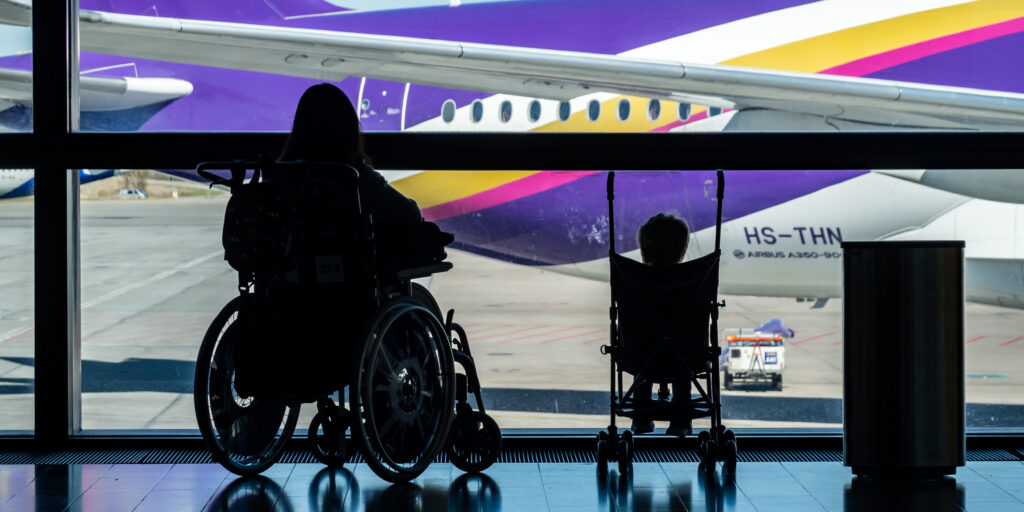
Five Things You Should Know About the SSA’s Changes to Supplemental Security Income
By Shannon Wood | Friday, November 1, 2024
This year, the Social Security Administration (SSA) announced several important changes to how it calculates Supplemental Security Income (SSI) benefits. SSI provides monthly cash payments to many adults and children with disabilities. For members of the neuromuscular disease community receiving SSI, these benefits are critical to meeting basic needs, including shelter, food, clothing, and care. People applying for and receiving SSI must meet strict eligibility requirements, including income and resource limits.
Here are five things you should know about the changes:
1. Overall changes to “in-kind support and maintenance” guidelines
Earlier this year, SSA finalized three SSI rules to reduce barriers and expand access to the benefit. These rules focus on improving “in-kind support and maintenance’” or ISM determinations. ISM determinations consider circumstances where an SSI recipient’s monthly benefit can be reduced by up to one-third if they are determined to be receiving in-kind (i.e., paid for by another person) support, such as food or shelter, from others. With these changes, more people affected by a neuromuscular disease who live in low-income households will qualify for SSI and receive the full SSI benefit to which they’re entitled.
2. Redefining “public assistance household”
The first change expands the definition of a “public assistance household”. Prior to the change, if an SSI applicant or recipient lives in a household where everyone receives a ‘public assistance’ benefit (previously defined as SSI, Temporary Assistance for Needy Families [TANF], and General Assistance [GA] or General Relief [GR]), they were considered to be living in a ‘public assistance household’, and SSA would not further evaluate whether other households members are providing the applicant or recipient with in-kind support, as the assumption is that each member of such households needs their own income to meet their own needs. This year, SSA made several changes to the ‘public assistance household’ rule. First, the rule adds Supplemental Nutrition Assistance Program (SNAP), or food stamps, as a public assistance benefit. In addition to adding SNAP as a public assistance benefit, SSA now defines a ‘public assistance household’ as one where only one other member of the household must receive a public assistance benefit, as opposed to all members of the household.
3. Removing reductions for informal food support
The second change surrounds SSI reductions for food from family and friends. Prior to the rule change, groceries or food support from friends and family counted as in-kind income and would lead to a reduction in SSI benefits. With this new change, food will no longer be counted as income. This will reduce the reporting burden on beneficiaries and strengthen food security for SSI beneficiaries, as they will no longer need to worry about accepting groceries or food assistance from friends and family. It is estimated that this change will increase monthly SSI payments by about $131 per month for over 90,000 individuals and allow more people to qualify for SSI.
4. Expanding the rental subsidy rule
The third change expands the rental subsidy rule. Prior, in all but seven states, if an SSI beneficiary is a renter and has their parent or child as their landlord, SSA would ask questions to determine if the landlord was charging less rent than they would have charged someone else. If so, SSA could reduce the monthly SSI benefit by up to one-third of the federal benefit rate + $20, which in 2024 amounts to $334.33 – a hefty deduction out of already modest benefits. With this new change, if an SSI recipient or applicant pays rent equal to or greater than the ‘presumed maximum value’ ($334.33), SSA will consider the rent as charged under a ‘business arrangement’ and will not reduce the SSI monthly benefit. This change will allow more individuals affected by a neuromuscular disease who currently rent a room from a parent or child keep their full monthly benefit and see less changes to their benefit month-to-month. SSA has estimated that this change could increase monthly SSI payments by about $132 per month for about 41,000 people, in addition to helping more people qualify.
5. Qualifying for higher benefits
These changes went into effect on September 30, 2024, but it’s important for members of the neuromuscular disease community receiving or applying for SSI to understand these changes and whether they apply to their situation in the redetermination or application process. If they believe they qualify for higher benefits as a result of these changes, SSI recipients should contact SSA or your local Social Security office. MDA’s Resource Center can help with such connections.
Join us in advocating for change
To drive its mission to empower the people we serve to live longer, more independent lives, MDA advocates for strengthening Social Security and SSI to provide better access to vital benefits for families affected by a neuromuscular disease. Join MDA’s Grassroots Advocacy Network to add your voice to MDA’s advocacy efforts.
Next Steps and Useful Resources
- For questions about accessing federal benefit programs, please contact MDA’s advocacy team at advocacy@mdausa.org. You can join MDA advocacy and help us advocate for these and many other issues that impact the neuromuscular disease community.
- Stay up-to-date on Quest content! Subscribe to Quest Magazine and Newsletter
Disclaimer: No content on this site should ever be used as a substitute for direct medical advice from your doctor or other qualified clinician.




